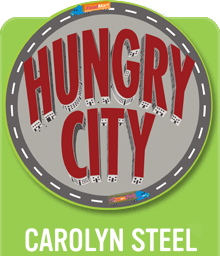Queen’s Market
Green Street in the London Borough of Newham is the sort of fragmented urban landscape Britain seems uniquely able to produce. A mixture of diddy Victorian terraces with hair-salons and chip-shops in their front rooms, flat-pack housing estates and gaping holes left over from the war, its southern end is dominated by the looming hulk that is home to West Ham United. To call it an architectural smorgasbord would be kind, yet it is precisely this open-ended diversity that makes Green Street the ideal setting for one of London’s most remarkable gastronomic institutions, a finalist at this year’s BBC Food and Farming Awards, no less: Queen’s Market.
Built in the sort of every-expense-spared concrete style typical of 1960s municipal architecture, Queen’s isn’t much to look at, yet as a social phenomenon, it is exceptional. London’s most ethnically diverse food market, it overflows four days a week with thousands of customers seeking every conceivable foodstuff from coconut to callaloo, parrot-fish to paw-paw. It is both the throbbing heart of Newham and the subject of an almighty political row, because, dearly beloved and successful though it is, Queen’s is up for demolition.
Five years ago, Newham Council decided that the market’s key location made it ripe for the sort of supermarket-led residential scheme typical of urban regeneration in post-Thatcher Britain. It did a deal with the developer St. Modwen’s, who in turn signed up Asda Mal-Mart, producing a scheme containing high-rise flats, a supermarket, and a token remnant of what the market had been. They might as well have lobbed a cracker into a pride of sleeping lions. Within weeks, traders and locals had metamorphosed into the ‘Friends of Queen’s Market’, a lobby group whose forceful opposition took both developer and council completely by surprise. Four years of campaigning later, the ‘Friends’ scored a victory when Asda walked off the project and the Council caved in, opening a dialogue with traders, re-styled as the Queen’s Market Traders’ Association.
Today, an uneasy optimism prevails, with campaigners divided between the Traders and ‘Friends’ who remain sceptical of the Council’s true intentions. But whatever the Market’s future, one thing is clear. As a valued social institution residing in a rotting building, Queen’s straddles two competing views of what cities should be. To one mindset, its dripping roof and grubby concrete represent a waste of valuable real estate. To the other, they are secondary to a level of social animation and cohesion sufficiently rare as to be priceless.
Queen’s thrives because most locals still cook for themselves, and the market forms an essential part of their everyday lives. To them, it represents nothing short of their identity – the very heart and soul of their community. Manish Patel, chair of the Queen’s Market Traders Association, says he ‘doesn’t give a monkey’s’ about the flats, so long as the market’s future is assured. One understands what he means.
As it happens, Queen’s didn’t win the BBC ‘Best Market’ award – that honour went to the equally worthy Bury Market in Lancashire. But that’s not the point. Given its location in an area of deprivation and fractured identity, Queen’s Market is testimony to the passion that daily rituals and shared values can still engender in Britain. That alone is worth celebrating.











Leave a Comment